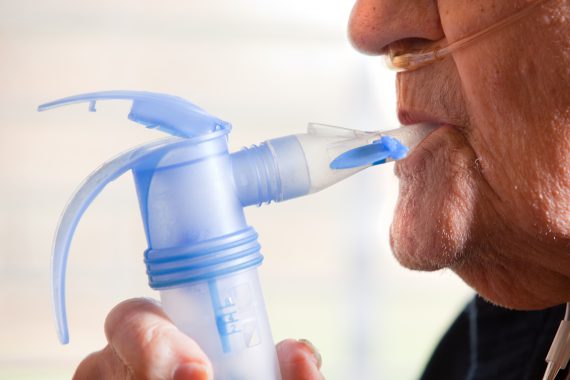GPs should consider spirometry testing for patients who are incidentally found to have signs of COPD on a chest X-ray or CT scan, NICE has said.
The new draft NICE guideline for COPD, the first to be published since 2010, says hospitals should refer these patients back to their GP for further testing.
NICE said the new recommendation should have only ‘minimal impact’ on general practice resources.
The guideline also updates COPD treatment recommendations, including:
- LAMA and LABA combination therapy for patients with spirometrically confirmed COPD without asthmatic features who continue to experience breathlessness and;
- a LABA with ICS for patients who do have asthmatic features.
It goes on to highlight the need for sputum culture before prescribing prophylactic antibiotics and to keep weighing up the benefits and risks, reminding GPs that there are no long-term studies on the use of prophylactic antibiotics in COPD patients.
Dr Mark Levy, locum GPSI in respiratory medicine in London, said that it was ‘reasonable’ for GPs to review patients with incidental findings but added that ‘the degree of resource impact will depend on the facilities and expertise at the practice.
‘If there is no spirometry, patients will have to be referred for this,’ he said.
Dr Richard Gilbert, GPSI in respiratory medicine in Norwich, said: ‘If the features suggestive of COPD are picked up on an investigation organised by the GP then I think it is reasonable for the GP then to organise spirometry.
‘I do not personally think there would be major workload implications for general practice from this. I don’t think though that we should be responsible for organising spirometry if the investigation has been arranged by a hospital specialist – they should arrange appropriate follow-up themselves.’
Pulse reported in 2016 that GPs would have to be certified and appear on a national register in order to perform spirometry, based on a new scheme implemented by NHS England.
But the BMA’s GP Committee said earlier this month that although spirometry appeared as an item within QOF, it is not part of GMS core contractual services and local commissioners are therefore responsible for setting training requirements.
The draft guidance on COPD diagnosis and management is out for consultation until 8 August 2018.
NICE has also released draft guidance on antimicrobial prescribing in COPD, urging GPs to limit the prescription of antibiotics in patients who are not having severe acute exacerbations.
NICE draft COPD guideline – key recommendations
- 1.1.12 – Consider a GP review and spirometry if a patient is incidentally found to have signs of COPD on a chest C-ray or CT scan
- 1.2.11 – Offer LAMA and LABA combination therapy to patients with spirometrically confirmed COPD, no asthmatic features and still have exacerbations despite optimal non-pharmacological management
- 1.2.12 – Consider LABA and ICS combination therapy for patients with spirometrically confirmed COPD, asthmatic features and still have exacerbations despite optimal non-pharmacological management
- 1.2.15 – Base the choice of drug or inhaler on the patient’s symptoms, how well they control symptoms, cost and patient preference
- 1.2.41 – Offer prophylactic azithromycin to patients who do not smoke, have optimised both pharmacological and non-pharmacological management and continue to have exacerbations with sputum production
- 1.2.42 – Ensure that the patient has had sputum culture before offering prophylactic antibiotics, to rule out resistant organisms
- 1.2.47 – Continue to weigh up the risks and benefits of prophylactic antibiotics – there are no long-term studies on their use in COPD
Source: NICE
Pulse October survey
Take our July 2025 survey to potentially win £1.000 worth of tokens

Visit Pulse Reference for details on 140 symptoms, including easily searchable symptoms and categories, offering you a free platform to check symptoms and receive potential diagnoses during consultations.












